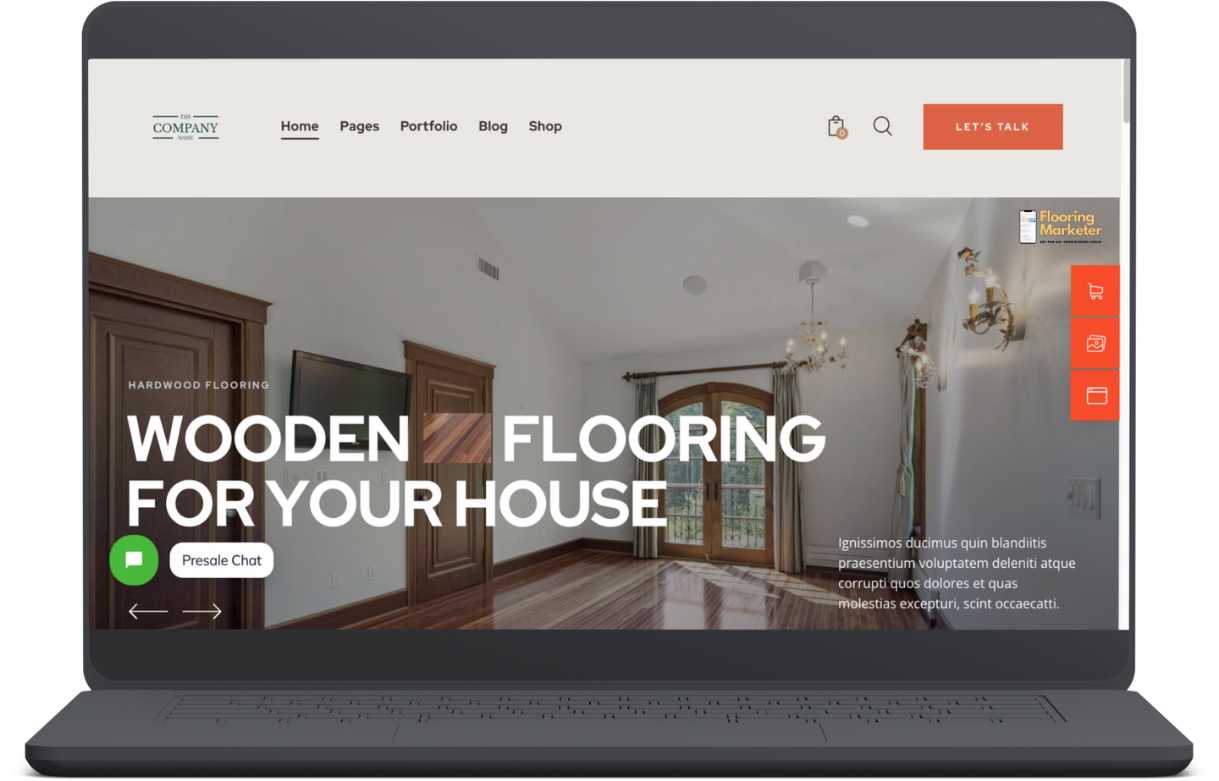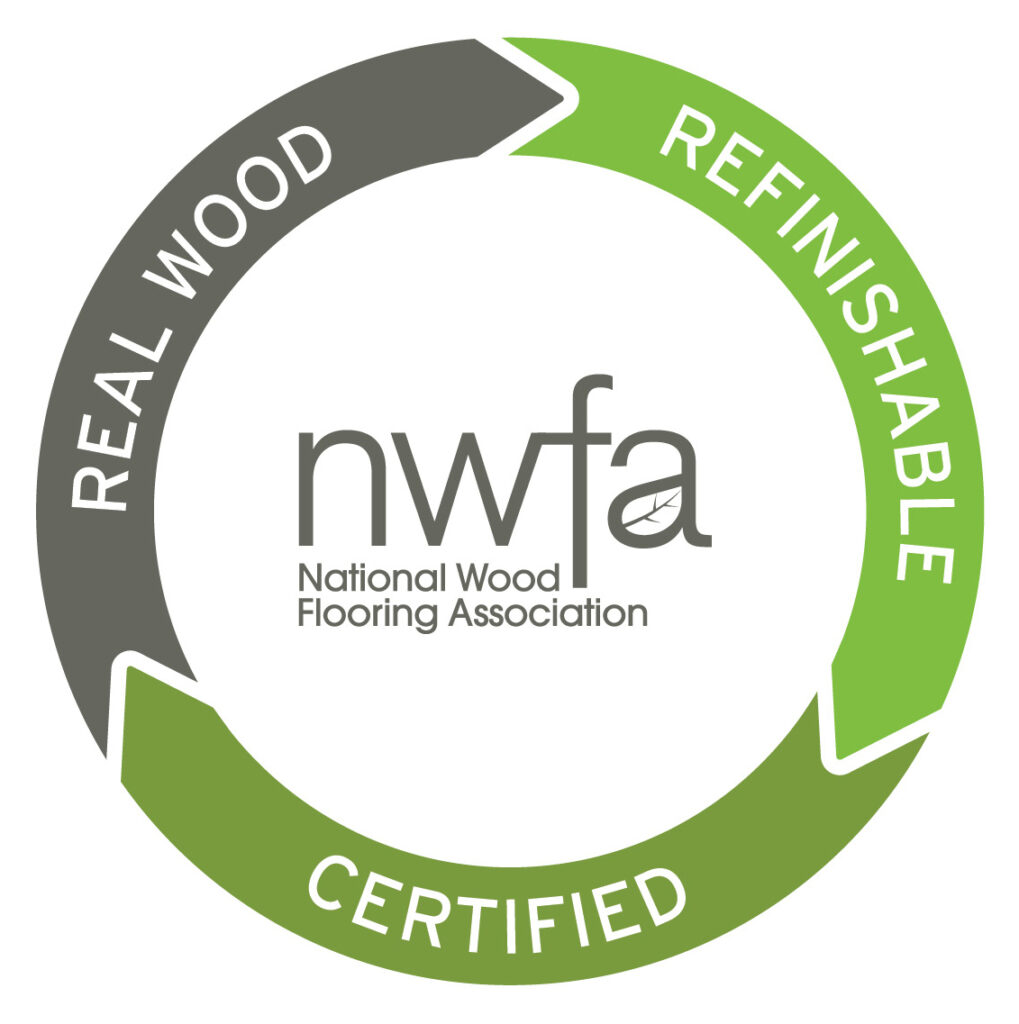Building a website for your flooring company is one of the most important steps you can take to grow your business. An effective website can help attract local leads, showcase your services, and convert visitors into customers. In this two-part guide, we’ll walk you through the entire process of creating a professional website for your flooring business, from planning and design to optimizing for SEO and user experience.
Why Your Flooring Business Needs a Website
Before diving into the “how,” let’s first cover the “why.” Here are the key reasons your flooring business needs a website:
- Online Visibility: Most customers search for flooring services online, and having a website increases your chances of being found.
- Lead Generation: Your website can serve as a 24/7 lead generation tool, helping you capture local leads while you focus on running your business.
- Showcase Your Work: A website allows you to display your portfolio, client testimonials, and the range of flooring services you offer.
- Build Trust: Customers are more likely to trust and hire a business with a professional, user-friendly website.
Now, let’s dive into the process of building your website.
Step 1: Plan Your Website
The first step in building a website for your flooring business is planning. A well-structured plan helps ensure your website will meet the needs of your customers and serve your business goals.
Define Your Target Audience
Who are your ideal customers? Are they homeowners looking to install new hardwood floors, businesses needing commercial flooring, or property managers looking for refinishing services? Clearly defining your target audience will help guide your website’s content, layout, and messaging.
Identify Key Pages
Your website should have all the essential pages needed to inform visitors and convert them into leads. Common key pages for flooring businesses include:
- Home Page: An overview of your services, with a strong call to action.
- About Us: Information about your company, mission, and team.
- Services Page: A detailed breakdown of the flooring services you offer.
- Portfolio or Gallery: Photos of completed projects to showcase your work.
- Testimonials: Reviews or feedback from satisfied clients.
- Contact Page: Your phone number, email, and a contact form to easily connect with potential clients.
Competitor Research
Research other flooring companies’ websites to get an idea of what works and what doesn’t. Take note of design elements, content organization, and their call-to-action (CTA) buttons.
Step 2: Choose a Platform
There are many platforms available for building websites, but choosing the right one depends on your budget, technical expertise, and long-term goals.
Popular Website Platforms
- WordPress: A flexible and powerful platform with thousands of themes and plugins. Ideal for businesses that want full control over customization and SEO but may require some technical knowledge.
- Wix: A user-friendly, drag-and-drop website builder perfect for beginners. While easier to use than WordPress, it can have limitations on design flexibility.
- Squarespace: A stylish, all-in-one platform with built-in design and marketing tools. Like Wix, it’s easy to use, but customization is somewhat limited.
- Shopify: If your flooring business plans to sell products (like materials or tools) online, Shopify is a solid e-commerce platform with integrated sales and shipping tools.
Consider Web Hosting
If you go with a platform like WordPress, you’ll need to choose a web hosting provider. Bluehost, SiteGround, and GoDaddy are popular options. They offer reliable hosting, and some even have WordPress-specific features that make installation easy.
Step 3: Design Your Website
Design plays a crucial role in creating a professional and user-friendly website. Your design should reflect your brand and be easy for visitors to navigate.
Choose a Professional Theme or Template
If you’re using a platform like WordPress, you’ll need to select a theme or template to start. Choose one that is clean, modern, and specifically designed for service-based businesses. Many themes offer built-in customization options, allowing you to change colors, fonts, and layouts to match your brand.
Mobile Responsiveness
Make sure your website design is mobile-friendly. Over 50% of web traffic comes from mobile devices, so your website should be easy to navigate and read on smartphones and tablets.
Branding Elements
Incorporate your company’s branding into the design of your site. This includes:
- Logo: Your logo should be prominent on your homepage and used consistently throughout the site.
- Color Scheme: Use your brand colors in the site’s design for a cohesive look.
- Font Choice: Choose fonts that are easy to read and match your brand’s style.
Call-to-Action Buttons
Make sure your website has clear CTAs on every page. Common CTAs for flooring companies include “Get a Free Quote,” “Schedule a Consultation,” or “Contact Us Today.” These buttons should stand out visually to guide visitors toward taking action.
Step 4: Content Creation
Your website’s content is just as important as its design. It needs to communicate your services, build trust, and provide value to your visitors.
Home Page Content
Your home page is the first impression for most visitors, so it needs to quickly communicate who you are, what you do, and why a potential customer should hire you. Make sure it includes:
- A headline that clearly states your services (e.g., “Professional Flooring Installation and Refinishing”).
- A brief description of your company and what sets you apart from competitors.
- A strong call to action to guide visitors toward scheduling an appointment or getting a free quote.
Service Pages
Each service you offer should have its own dedicated page. For example, if you offer hardwood floor installation, carpet installation, and refinishing, create individual pages for each. This helps with SEO and makes it easier for customers to find the exact service they need.
- Include descriptions of the service, any guarantees or warranties, and photos of past projects.
- Use keywords that are relevant to each service, such as “hardwood floor installation” or “commercial flooring.”
About Us Page
The About Us page should tell the story of your business. This is where you highlight your experience, values, and why customers should trust you. Include photos of your team and any certifications or awards your company has earned.
Testimonials and Portfolio
Social proof is critical for building trust. Add a dedicated Testimonials page with reviews from satisfied customers, and include a Portfolio or Gallery page showcasing high-quality images of completed flooring projects.
We covered the foundational steps of building a website for your flooring company, including planning, platform selection, design, and content creation. Next, we’ll focus on how to optimize your website for search engines (SEO), improve user experience (UX), and ultimately drive traffic to your site.
Step 5: Optimize Your Website for SEO
Search engine optimization for flooring contractors is very essential for ensuring that your website ranks well in search engine results and attracts organic traffic from potential customers in your area. Here’s how to optimize your flooring company website for SEO:
On-Page SEO
On-page SEO refers to the optimization of individual web pages to improve their search engine rankings. Key aspects of on-page SEO include:
- Keyword Research: Start by identifying the most relevant keywords for your business, such as “flooring installation,” “hardwood floor refinishing,” and “commercial flooring in [Your City].” Use tools like Google Keyword Planner, Ahrefs, or SEMrush to find the best keywords for your area.
- Title Tags and Meta Descriptions: Each page should have a unique title tag and meta description that include your primary keywords. For example, a service page for hardwood floor installation could use a title like “Hardwood Floor Installation in [Your City] | Professional Flooring Services.”
- Header Tags (H1, H2, H3): Use header tags to structure your content. Your main page title should be an H1 tag, and subheadings should use H2 and H3 tags. This makes your content easier to read and helps search engines understand your page’s structure.
- URL Structure: Make sure your URLs are clean, simple, and include keywords. For example, “www.yourflooringcompany.com/hardwood-floor-installation” is more SEO-friendly than “www.yourflooringcompany.com/page123.”
- Internal Linking: Link to other relevant pages within your site. This helps visitors navigate your site and also improves your SEO. For example, link your hardwood floor installation page to your portfolio or gallery page.
Local SEO
Since flooring companies rely heavily on local customers, focusing on local SEO is crucial. Here’s how to optimize for local searches:
- Google Business Profile: Claim and optimize your Google Business Profile (formerly Google My Business) with accurate business information, including your address, phone number, and service areas. Encourage customers to leave reviews, as positive reviews can boost your local SEO rankings.
- Location-Based Keywords: Use location-specific keywords throughout your site. For example, instead of just “flooring installation,” use “flooring installation in [Your City].”
- NAP Consistency: Ensure that your business name, address, and phone number (NAP) are consistent across all online platforms, including your website, social media profiles, and directory listings.
Mobile Optimization
With more people using smartphones to search for services, it’s essential that your website is optimized for mobile devices. A mobile-friendly website is not only important for user experience, but Google also prioritizes mobile-friendly sites in its search results.
- Responsive Design: Ensure your website is responsive, meaning it automatically adjusts to fit different screen sizes. This will make it easy for visitors to navigate your site on smartphones and tablets.
- Fast Loading Times: Page speed is a critical ranking factor. Use tools like Google PageSpeed Insights to test your website’s speed and make improvements if necessary. Compress images, reduce the use of large scripts, and consider using a content delivery network (CDN) to improve load times.
Step 6: Focus on User Experience (UX)
User experience (UX) refers to how visitors interact with your website. A website that is easy to navigate and provides a positive user experience is more likely to convert visitors into customers.
Simple Navigation
Your website should be easy to navigate, with a clear menu that leads visitors to the most important pages (Home, Services, About Us, Contact). Avoid cluttered menus or too many subcategories, as these can confuse visitors.
Visual Appeal and Readability
- High-Quality Images: Use high-quality images of your completed flooring projects to create visual appeal. Be sure to compress images to avoid slowing down your site.
- Readability: Use clean, easy-to-read fonts and break up large chunks of text with headers and bullet points.
Clear Call-to-Action (CTA)
Each page should have a clear CTA that tells visitors what to do next, such as “Get a Free Quote,” “Contact Us,” or “Schedule a Consultation.” Make your CTAs stand out by using contrasting colors and placing them in prominent locations on your website.
Step 7: Drive Traffic to Your Website
Once your website is built and optimized, the next step is to drive traffic to it. Here are a few strategies to bring potential customers to your site:
Paid Advertising
- Google Ads: Create pay-per-click (PPC) ads targeting local search terms like “flooring installation near me” or “hardwood floor refinishing in [Your City].” Google Ads allows you to appear at the top of search results for specific keywords.
- Social Media Ads: Run ads on platforms like Facebook and Instagram to promote your services. You can target users based on location, interests, and behaviors, making it easier to reach potential customers.
Content Marketing
- Blogging: Write blog posts related to flooring trends, maintenance tips, or “how-to” guides. This not only helps with SEO but also positions your business as an industry expert. Use long-tail keywords in your posts, such as “best hardwood floors for high-traffic areas” or “how to refinish hardwood floors.”
- Video Content: Create videos showcasing your services, customer testimonials, or step-by-step guides on flooring installation. Share these videos on your website, YouTube, and social media to attract more traffic.
Social Media Marketing
Create profiles on platforms like Facebook, Instagram, and LinkedIn to connect with local homeowners, contractors, and businesses. Share updates, photos of completed projects, and special offers to engage your audience and drive traffic back to your website.
Step 8: The Best Step – Hire Flooring Marketer
While building and optimizing a website for your flooring company is essential, the best step you can take is to hire Flooring Marketer, a digital marketing agency specialized in the flooring industry. We understand the unique needs and challenges of flooring businesses and have the expertise to craft a custom strategy that drives results.
From designing a visually appealing, mobile-friendly website to implementing targeted SEO and lead-generation campaigns, Flooring Marketer is dedicated to helping flooring companies grow and dominate their local markets. Let us handle the digital marketing so you can focus on what you do best—delivering exceptional flooring services.
Ready to elevate your online presence and generate more leads? Contact Flooring Marketer today, Call Now: 415-692-3991




